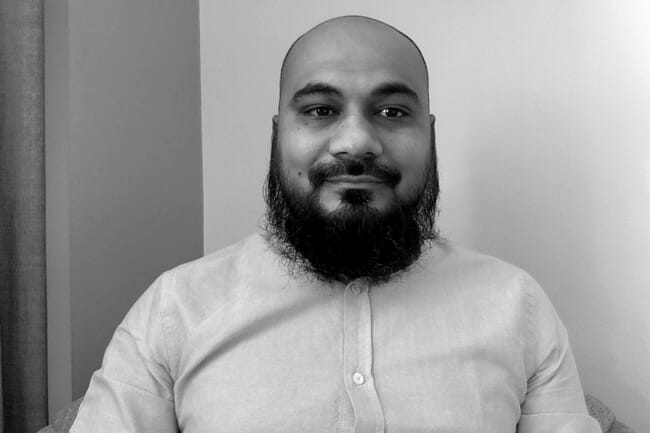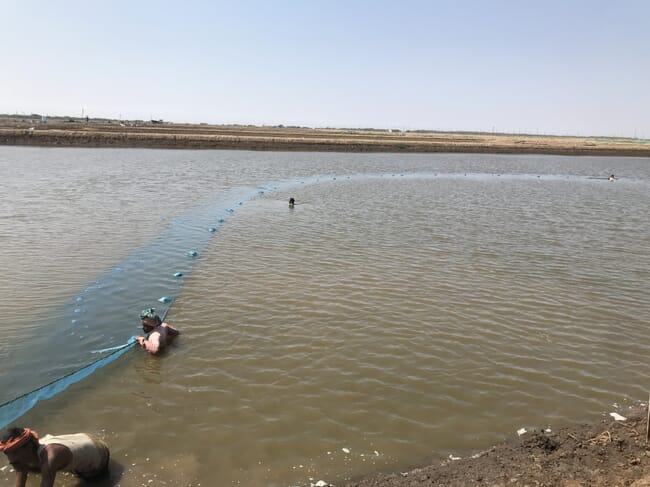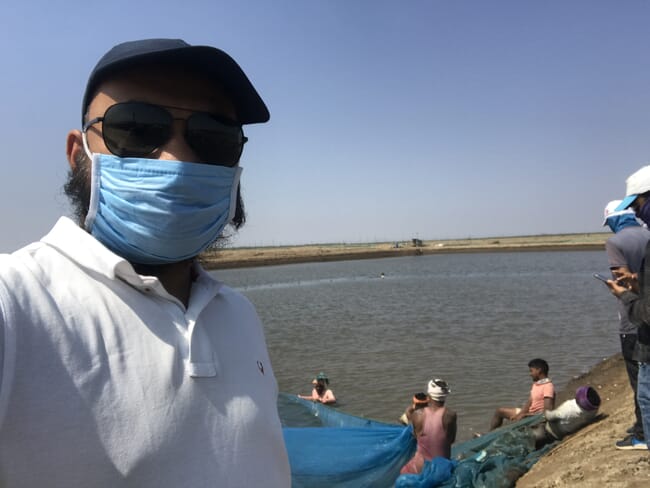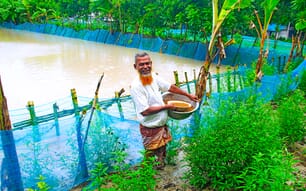What is your name, age, role and country of operation?
Naeem Banglawala, I’m 33, and I’m the CEO and Director of MVJ Group in Gujarat, India.

How long have you been farming for?
Since 2016, so nearly five years.
What size is your farm and what species do you produce?
0.4 – 0.6 hectares (4,000 – 6,000 m²) with 14 culture ponds and we’re going to add 25 hectares in the near future. We produce whiteleg shrimp (Litopenaeus vannamei).
What sort of production system do you operate?
We’re farming in an urban setting in Surat, Valsad district. We use outdoor ponds without a plastic lining. We keep the water level at about 1.2 metres in the dry season and its maximum height would be about 2 metres.
Why did you decide to embark on a career in aquaculture?
It was a family interest – my self and family were very interested in aquaculture and used to visit friend’s farm to observe things. In 2016, we decided to start our shrimp farming business as part of MVJ Group.

What’s your ultimate ambition in the sector?
Even though it’s a family-owned group, we are hoping to vertically integrate the entire production process. We don’t view aquaculture as a single activity, we’re looking at an entire farm-to-fork process. We began setting up a processing facility and it should be active by May or June of this year. So, we’ve started at the farm level and are getting closer to that farm-to-fork goal, step-by-step.
What’s your biggest worry at work?
Day-to-day, our biggest worry is disease and how to take corrective actions. For new diseases like EMS, farmers may not see the full impact until harvest, when their survival rate drops below 70 percent. When farmers can’t calculate their actual survival rate, they wind up overfeeding and using additional resources that compound their business losses. My other worry is accessing quality seedstock. Quality and lifespans can vary between batches, and there isn’t a lot of clarity between hatchery operators and farmers. If the seeds are good, our shrimp are healthy but if not, things get more complicated.
What’s your greatest achievement to date?
Achievement is an overrated word. We have a lot of smaller achievements instead of a big one. All of the day-to-day good news becomes a bigger achievement in time. For us, when we started our first crop in 2016, we had a very bookish, theoretical understanding of aquaculture – we didn’t have any practical knowledge. That year, we had a white spot outbreak and suffered a big loss but were able to stay in business. When we started a new crop in 2017, we had multiple electric failures and had another huge loss. But we continued trying, created protocols and SOPs and we know how to handle these challenges. We don’t panic when our oxygen levels unexpectedly dip and we aren’t afraid of white spot – we know what to do. Now, we can produce two crops every year without a loss.

What piece of equipment would you most like to have on your farm?
I haven’t used an auto-feeder yet, but it’s something that we want to use moving forward. I’m also interested in the new apps that are coming on the market. If we can connect all of our production processes to the apps – like basic parameter testing and health checks – we can minimise risks and maximise profitability while improving the quality of our shrimp.
What’s your favourite seafood dish?
Fried shrimp of course! Also, silver pomfret (Pampus argenteus).
If you would like to be considered for taking part in this Fish Site series, please contact us with the details of your farm.








